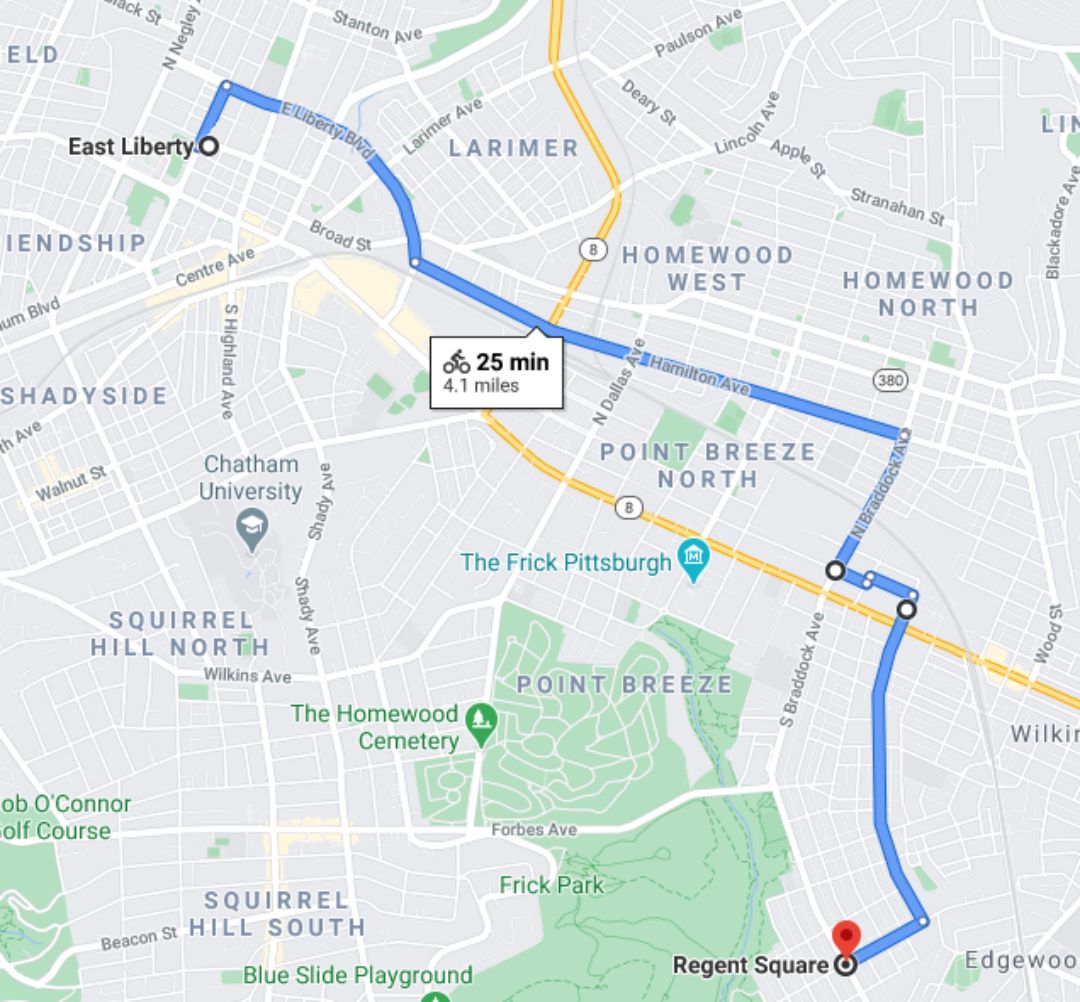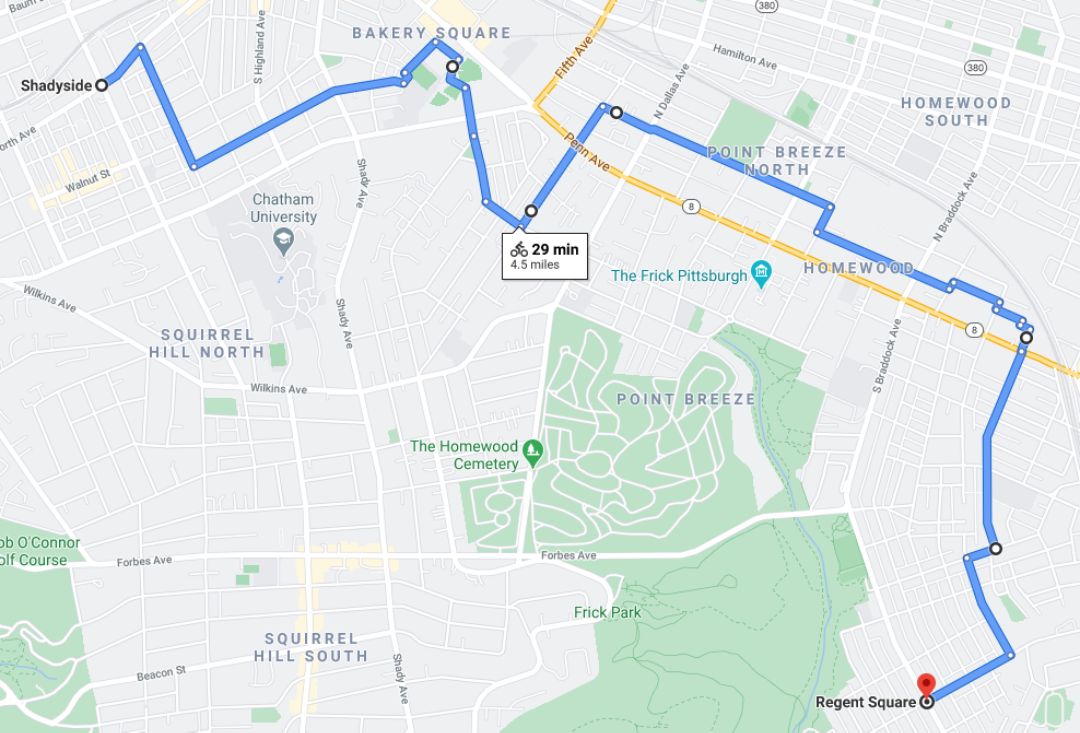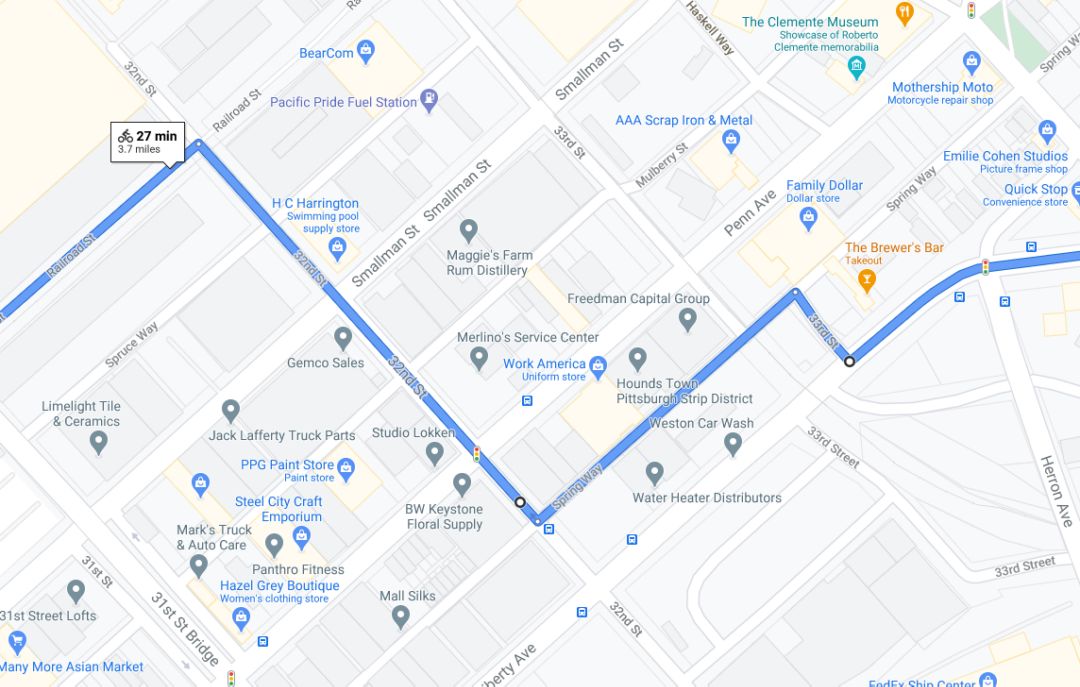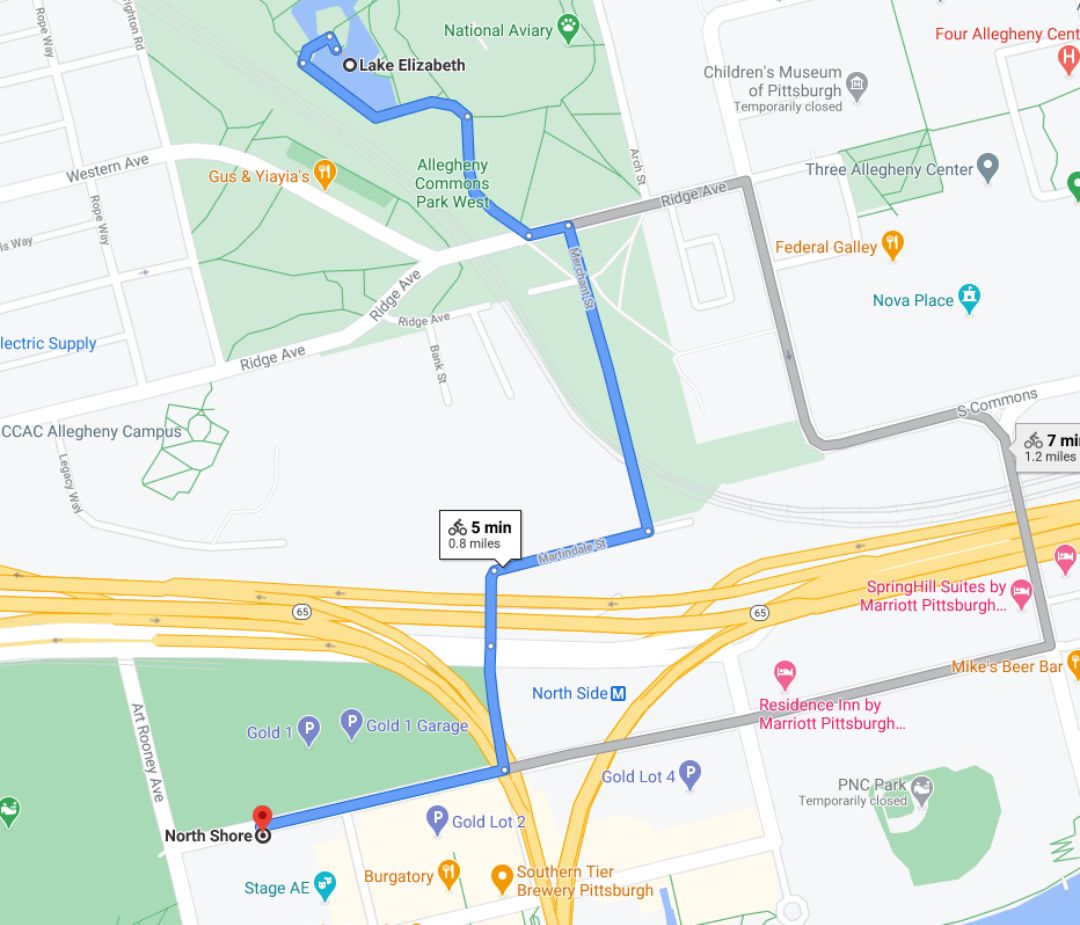Riding a bike in Pittsburgh
2021-04-02
I get asked about biking in Pittsburgh a lot, so I wrote this post to point folks to who are looking to get started.
Getting a Bike
I recommend buying a cheap bike before investing in a nicer ride; you may find cycling isn't for you and it'd be a shame to deprive both your bank account and a sweet ride from full usage.
There are a few options for cheap bikes in the city:
Free Ride
Free Ride is a bicycle collective that focuses on repairing and re-selling donated bikes, and where I got bikes #2 and #3 in my personal timeline. You can either buy a repaired bike outright or volunteer helping to repair bikes and earn credit towards a bike you'd like. The tools and equipment in the shop are available for use with a suggested $5 donation (or volunteer time), and they sell parts, including hard to find parts for older bikes.
I really can't recommend the volunteer program enough; you'll learn how to maintain your own bike while learning from skilled mechanics, plus you get to meet a wide swath of the PGH cycling community. They have regular events, too!
The downside is that you might have to hunt for a bit to find a quality ride; some of the bikes are just so-so or have obscure parts. Volunteering is a great way to learn how to pick out the good stuff.
Thick Bikes' used section
Thick Bikes is a LBS (Local Bike Shop) located in the South Side. They sell full-price bikes, but they also repair and resell quality used bikes. I haven't bought one myself, but I've browsed and they seem like a good deal; a step above what you'll find at Free Ride, but not as big of an investment as a new bike. They're also repaired by pros.
Craigslist/eBay
Self-explanatory. Check for fat-fingered listings (e.g. shwin) to score a real deal; I bought bike #4 here at a nice discount because the post had a typo in the brand name.
What to look for
You'll develop preferences over time, but start with:
- Relaxed geometry
- Steel frame
- Wide-ish tires
- 2 x n gears
"Relaxed geometry" means the length and angles of the frame tubes put you in a comfortable, upright position that lets you easily look around, with your weight mostly on your sits bones and not on your hands. You want a hybrid, 26" mountain bike, or a "gravel grinder" if you can find one cheap; beach cruisers are a no.
Frames are typically either aluminum or steel; aluminum is lighter, but stiffer and less pleasant. They're also liable to crack or break over time. Steel frames are bullet-proof and feel like butter when you're zipping around; prefer steel.
Tire width can really be anything, but in Pittsburgh you'll occasionally want to go on the road (or path) less traveled. Get tires that are 30MM or wider.
Gearing is important for hills; older mountain bikes will have a 3 x n setup, meaning three "wheels" of gears in the front and n cogs on the rear wheel. These provide the greatest range of gearing, but I've found 2 x n is more than enough for day-to-day riding and reduces the amount of stuff that can go wrong. My current ride is a 1 x 11, which is really perfect for me; however, I don't think 1 x n rigging can be had cheaply, so you're probably going to get a 2 x n instead.
Bikes boil down to:
- Frame
- Components (brakes, shifters, derailleurs, cogs)
- Wheels
- Tires
Look for a frame from a reasonable company, defined as any company that doesn't sell bikes at Walmart. I really like older Schwinn frames (70s and 80s), Bridgestone frames, and older Trek frames.
There are three major components manufacturers: Shimano, SRAM, and Campagnolo. Go for a bike with either Shimano or SRAM components. Each offer different levels of components in terms of quality, but it doesn't matter for your purposes (when it does, you'll know!). One exception is brakes: you can buy Ultegra or Force brakes for ~$50 used, and they offer a huge quality-of-life improvement. Buy a bike with lower quality components and upgrade the brakes.
Wheels and tires also don't really matter yet, aside from the >30MM recommendation above.
Riding on city streets
Safety tips:
- Always bring charged lights and wear a helmet
- Act like you're invisible; don't count on cars or people to see you and plan accordingly.
- When passing parked cars, give as much berth to the parked car as you can and look into mirrors and at the front tires; if you see a face or the tires are turned, someone may be about to either pull out or open their door.
- If you're uncomfortable, take more space on the road - this is the opposite of what your brain will tell you to do, but it will make you and the drivers around you safer; you'll be more obvious to them and they'll be forced to slow down.
- Avoid taking sidewalks, as drivers and pedestrians won't be looking for you
- If there's a car behind you, it can be tempting to dip into the spaces between parked cars to let them pass you - don't do this. Subsequent cars won't know you're there and could hit you when you move back into the lane.
- Avoid riding at night, prioritize safe routes over short routes, don't drink and ride, don't go the wrong way down one way streets. Congrats, you've just eliminated the majority of danger for cyclists! (Thanks, Sayf!)
General quality of life tips:
- Keep a trash bag handy for rain; you can waterproof a bag or your torso with it in a pinch (Thanks, Jim!)
- Buy and keep stocked kit to change and re-fill a tire (and learn how to change one!)
Navigating the city
- Print/grab a copy of the Bike PGH map.
- Cycling directions on Google Maps have almost always been kind to me, with some exceptions below.
Fifth Ave/Penn Ave
Generally Google Maps will suggest taking Reynolds through the park or Hamilton and either way dump you onto Braddock. Braddock does have a bike lane, but it disappears right as you get to Forbes and it's tough to navigate that intersection safely. After that, there are parked cars and no bike lane which feels a bit unsafe. I prefer to take Hamilton or Thomas and cross Penn at Trenton or West Street. Images below link to Google Maps.
Traveling through the strip
Google Maps will generally encourage you to take Penn Avenue through the Strip, which is bad advice; Penn is very busy, with no bike lanes. Instead, transit to the cross street you want via Railroad, which has pretty much no traffic.
Coming from downtown, a bike path runs along the river from the Point to 24th Street which Google Maps doesn't recognize at all but I assure you exists; take that to Railroad, then take 32nd Street to Spring Way and turn onto what is technically 33rd Street for slightly easier spot to cross Liberty and continue up the hill. If you're not comfortable crossing there, you can continue up Spring to 34th Street, then double-back onto Ligonier where you'll have a light to ease the turn.
Allegheny Commons to North Side
Google Maps will often try and take you down Federal Street from the Commons Loop, but it's not a very bike-friendly stretch. Instead, I prefer to take the Merchant St tunnel.





